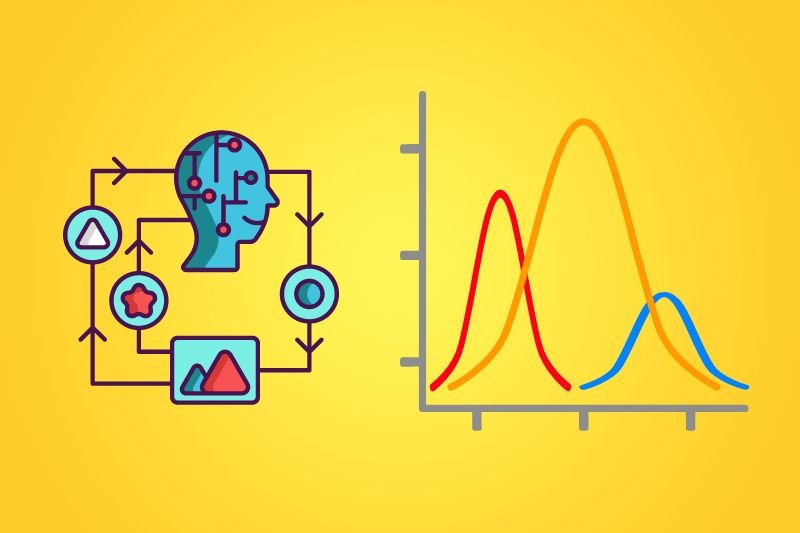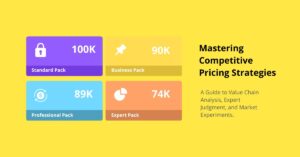
In an era where dynamic pricing models are pivotal in industries like retail and airlines, understanding and leveraging sophisticated algorithms can be a game-changer. This article delves into the intricacies of Thompson Sampling, a key component in the realm of probabilistic decision-making and dynamic pricing strategies. We explore its roots in Bayesian statistics and reinforcement learning, and its application in solving complex multi-armed bandit problems, providing a thorough guide for businesses looking to enhance their pricing strategies using advanced algorithms.
Thompson Sampling
Overview
- Thompson Sampling, also known as Bayesian Bandits, is a probabilistic algorithm used in multi-armed bandit problems.
- It’s an approach for balancing exploration (trying new or less understood options) and exploitation (leveraging known options) in decision-making processes.
Working Principle
- In Thompson Sampling, the algorithm maintains a probability distribution for each option (or ‘arm’) based on past rewards and continually updates these distributions as more data is collected.
- When a decision is to be made, the algorithm samples from these distributions and chooses the option with the highest sampled value.
Application in Dynamic Pricing
- For dynamic pricing, each ‘arm’ could represent a different pricing strategy. Thompson Sampling helps in iteratively identifying which pricing strategy maximizes revenue or another specific metric.
Multi-Armed Bandit Problem
Basic Concept
- The term comes from slot machines (or “one-armed bandits”) in casinos. Imagine a gambler facing several slot machines, each with a different, unknown probability of payout. The gambler must decide which machine to play, how many times to play it, and when to switch to another machine.
- The challenge is to maximize the total reward (or minimize loss) over a series of plays.
Relation to Thompson Sampling
- Thompson Sampling is a solution strategy for the multi-armed bandit problem. It balances the trade-off between exploring new machines and exploiting known machines that have paid off well in the past.
Bayesian Statistics and Its Relation
Bayesian Statistics
- Bayesian statistics is an approach to statistics in which all forms of uncertainty are expressed in terms of probability.
- It’s based on Bayes’ Theorem, which describes the probability of an event based on prior knowledge of conditions that might be related to the event.
Relation with Thompson Sampling
- Thompson Sampling is grounded in Bayesian principles. It uses prior distributions (based on previous knowledge or assumptions) and updates them as new data comes in (posterior distributions).
- In dynamic pricing, for instance, it would start with some assumptions about how different prices might perform and update these beliefs as it observes customer reactions to various prices.
Connection with Time Series Analysis and Reinforcement Learning
Time Series Analysis
While Thompson Sampling is not a time series analysis technique per se, it can be used in dynamic environments where data evolves over time, like in price optimization.
Reinforcement Learning
Thompson Sampling is a part of reinforcement learning, a type of machine learning where an algorithm learns to make decisions by performing actions and receiving feedback from those actions.
To further explore and understand Thompson Sampling and its applications in dynamic pricing, particularly in the retail and airline industries, we delve deeper into each component of the concept.

Deep Dive into Thompson Sampling and Its Applications
Understanding Thompson Sampling
Probabilistic Nature
- Thompson Sampling is grounded in probability theory. It deals with uncertainty by assigning a probability distribution to each potential action, reflecting how likely each action is to yield the best result.
- Key Aspect: The probabilistic approach differentiates it from deterministic algorithms, which always produce the same output from the same input.
Adaptive Learning
- As new data comes in, Thompson Sampling updates the probability distributions (known as posterior distributions in Bayesian terms) for each option. This constant updating allows the algorithm to adapt to changing environments and learn over time.
- Application Insight: In dynamic pricing, this adaptability is crucial as customer behavior and market conditions can change rapidly.
Multi-Armed Bandit Problem: Real-World Analogy
Practical Scenario:
- In a retail context, each ‘arm’ of the bandit could represent a different pricing level for a product. The challenge is to determine which pricing level optimizes a specific objective, such as maximizing profit or sales volume.
- Business Application: Retailers can use this approach to experiment with different pricing strategies without fully committing to one strategy at the expense of others.
Bayesian Statistics: The Foundation
Prior and Posterior Knowledge
- The algorithm starts with ‘prior’ beliefs (prior distributions) about the outcomes of different actions, which could be based on historical data or even assumptions if data is scarce.
- As it gathers more data (‘evidence’), it updates these beliefs to ‘posterior’ distributions, reflecting the new understanding of the likelihood of each outcome.
- Application in Pricing: Initially, a business might have equal belief in the success of different pricing strategies, but as customer data comes in, it will update these beliefs to reflect which prices are actually driving more sales or profit.
Reinforcement Learning Connection
Feedback Loop
- Thompson Sampling is a part of the broader framework of reinforcement learning, where an agent learns to make decisions by taking actions and observing the outcomes of these actions.
- Significance: This learning process is akin to a feedback loop, constantly improving the decision-making algorithm based on real-world interactions.
Time Series Analysis Relevance
Dynamic Data
- While Thompson Sampling itself isn’t a time series analysis tool, it’s highly relevant in scenarios where data points are time-dependent, such as price changes over time in response to market demand or seasonal trends.
- Key Consideration: The ability to adapt to time-based changes makes it an effective tool for dynamic pricing strategies where historical trends and future predictions are integral.
Let’s delve deeper into the concept of the ‘arm’ in the multi-armed bandit problem, including its origin and where to learn more about it.
The ‘Arm’ in Multi-Armed Bandit Problem
Origin of the Term
- The term “multi-armed bandit” comes from the analogy of a gambler at a row of slot machines (sometimes referred to as “one-armed bandits” due to their lever or ‘arm’ and the likelihood of losing money).
- In this analogy, each slot machine (or ‘arm’) has different, unknown odds of winning, and the gambler must decide which machines to play, how many times, and in what order.
What is an ‘Arm’?
- In the context of the multi-armed bandit problem, an ‘arm’ represents a decision or action that can be taken. Each arm has an associated reward or outcome, which is typically unknown to the decision-maker at the outset.
- In dynamic pricing, each ‘arm’ could represent a different pricing strategy or price point.
Why ‘Multi-Armed’?
- ‘Multi-armed’ signifies the presence of multiple options or actions available to the decision-maker. The challenge lies in choosing the best arm (or combination of arms) to maximize cumulative reward over time.
Learning Resources
- Books:
- “Bandit Algorithms for Website Optimization” by John Myles White. This book provides an introduction to using bandit algorithms for web-based applications, including A/B testing and dynamic pricing.
- “Reinforcement Learning: An Introduction” by Richard S. Sutton and Andrew G. Barto. This book, while broader in scope, covers foundational concepts in reinforcement learning, including multi-armed bandits.
- Online Courses:
- Research Papers and Journals:
- Journals like “Journal of Machine Learning Research” and “Neural Computation” occasionally publish research on multi-armed bandits and their applications.
- ArXiv and Google Scholar are good resources for finding relevant research papers.
The Power of Thompson Sampling in Dynamic Pricing
Thompson Sampling, with its roots in Bayesian statistics and reinforcement learning, offers a powerful framework for decision-making in uncertain and dynamic environments. Its ability to balance exploration and exploitation makes it particularly valuable for dynamic pricing strategies in retail and airline industries.
By continuously updating its strategy based on real-world data and outcomes, it enables businesses to optimize their pricing strategies in real-time, leading to improved sales, customer satisfaction, and overall business performance.
Ready to revolutionize your pricing strategy with the power of advanced algorithms? At Thriveark, we specialize in implementing dynamic pricing solutions tailored to your unique business needs. Our team of experts leverages cutting-edge techniques like Thompson Sampling and multi-armed bandit algorithms to help you optimize pricing, enhance customer satisfaction, and increase profitability.
Whether you’re in retail, airlines, or any other industry facing dynamic market conditions, Thriveark is here to guide you through the journey of adopting intelligent pricing strategies. Contact us today to discover how we can transform your pricing approach with data-driven precision and innovation.


